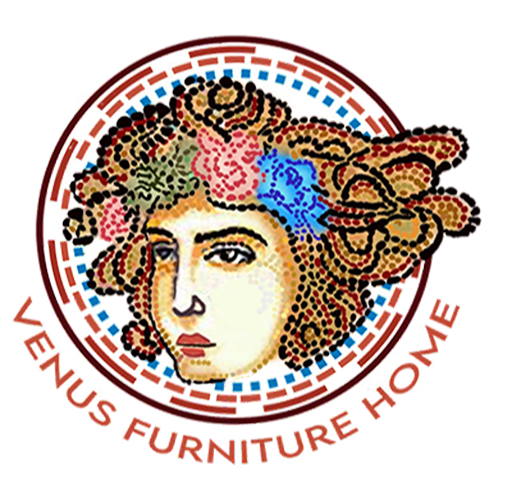Blog
What is the Best Type of Leather for Furniture?

Introduction
The timeless attraction of the leather living room set is obvious. it represents elegance, durability, and comfort, which many homeowners seek. However, with so many different varieties of leather, it can be difficult to find the right one for your sofa set.
Venus Home Furniture understands the situation all too well. With many years of experience helping customers build their ideal living room set, we’re here to help you through the leather living room set world. Understanding the differences between leather varieties can help you make the best decision for your lifestyle and tastes.
Understanding Leather Types
A leather living room set is a substantial investment, and understanding the various varieties of leather available is the first step toward making an informed decision. Let’s look at the many sorts of leather, beginning with the most premium alternative.
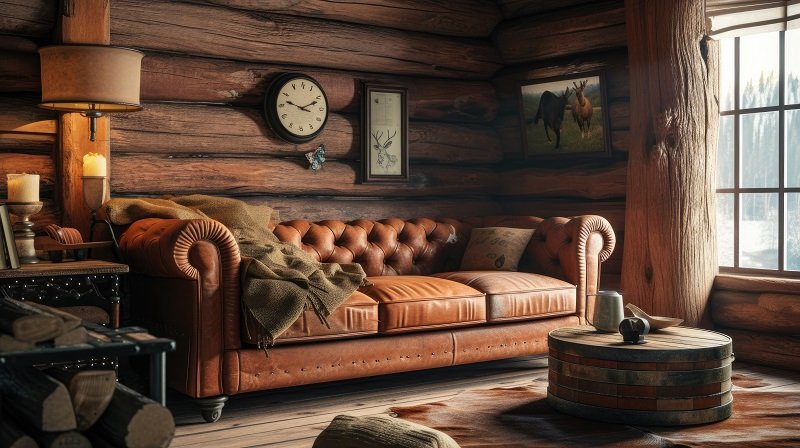
1- Full-Grain Leather
Full-grain leather is the finest leather available for your sofa set, known for its durability and natural beauty. Full-grain leather is like a great wine; it only improves with age. Its surface has not been sanded or cleaned to eliminate defects, allowing the hide’s strongest fibers to remain undamaged. This produces a material that is very durable and can survive the pressures of everyday usage, making it ideal for families with kids and pets. The inherent irregularities of full-grain leather give each piece of furniture character and originality. Over time, it develops a lovely patina that adds to its rustic character. While full-grain leather takes regular maintenance to keep its beauty, the effort is rewarded with a sofa set that will last for generations. Simple cleaning and conditioning will keep it looking its finest.
Pros:
- Extremely durable and long-lasting
- Develops a unique patina over time
- Breathable and comfortable
- Rich, natural appearance
Cons:
- Most expensive option
- Requires regular maintenance and conditioning
- May show imperfections and natural markings
2- Top-Grain Leather
Top-grain leather is a popular choice for high-end sofa sets because it combines durability with a polished look. Top-grain leather is like a refined gem. It is lightly sanded to eliminate defects, leaving a clean and consistent surface. This gives it a stylish, sophisticated appearance that appeals to modern tastes. Top-grain leather is somewhat less durable than full-grain leather, but it is still strong and resistant to wear. It’s a wonderful choice for those who wish to find a balance between beauty and durability. Top-grain leather is easier to care for than full-grain leather, requiring less conditioning yet maintaining a luxurious feel. Regular dusting and conditioning are sufficient to maintain it in excellent shape.
Pros:
- Durable and resistant to wear
- Smooth, refined appearance
- Easier to maintain than full-grain leather
- Less expensive than full-grain leather
Cons:
- Slightly less durable than full-grain leather
- Does not develop the same patina
- Still relatively expensive
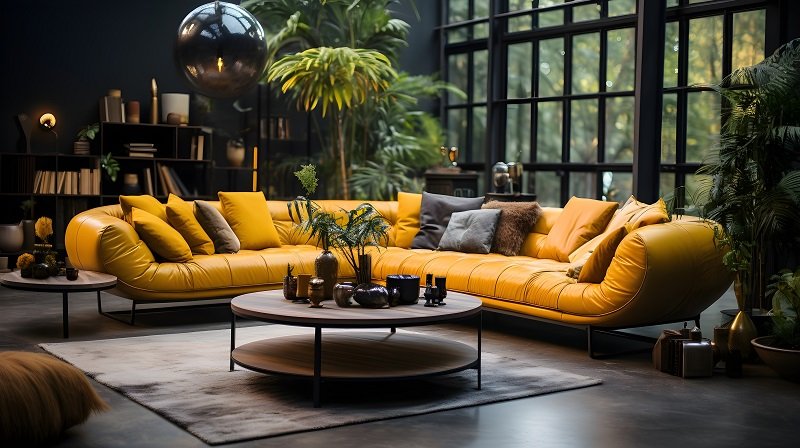
3- Split/Genuine Leather
Split or genuine leather is an affordable choice, obtained from the hide’s bottom layers and often used in less visible parts of leather living room sets. Split leather lacks the natural grain of higher-quality leather. It is frequently coated with a finish to give it an even appearance, which may occasionally seem less real. Split leather, while less durable than full-grain or top-grain leather, might nevertheless be a suitable alternative for less frequently used furniture components. Split leather is easy to clean and preserve, requiring less maintenance than higher-quality leathers. However, it may not age as well.
Pros:
- More affordable than full and top-grain leathers
- Uniform appearance
- Easy to maintain
Cons:
- Less durable
- Lacks the natural look and feel of higher-quality leathers
- Does not age well
4- Bonded Leather
Bonded leather is created by bonding leftover leather scraps with polyurethane or latex, making it an economical but less durable choice. Bonded leather can simulate the appearance of real leather, but it lacks the depth and feel of higher-quality alternatives. It frequently feels more artificial. This sort of leather wears out more quickly, particularly in high-traffic areas. It’s more suited to ornamental reasons than everyday use. Bonded leather is simple to clean and stain-resistant, making it suitable for families with children or pets. However, its lifetime is often shorter.
Pros:
- Very affordable
- Easy to clean
- Can mimic the look of real leather
Cons:
- Least durable, prone to peeling and cracking
- Feels synthetic
- Short lifespan
5- Faux/Vegan Leather
Faux or vegan leather is an artificial replacement for animal leather that appeals to those who are ethically or financially concerned. Modern faux leathers may resemble real leather, with a range of finishes to suit different designs. While not as long-lasting compared to real leather, high-quality faux leather may tolerate gentle use and is frequently more resistant to scratches and fading. Faux leather is simple to clean and maintain, often requiring just a wet towel.
Pros:
- Cruelty-free, ethical choice
- Wide range of colors and finishes
- Easy to maintain and clean
- Budget-friendly
Cons:
- Less breathable than real leather
- Can feel synthetic
- Does not develop a patina

What’s the Difference Between Leather Living Room Set Materials?
1- Appearance
Full-Grain: Natural, unique imperfections; develops a rich patina.
Top-Grain: Smooth, consistent surface with a refined look.
Split/Genuine: Coated, less authentic appearance.
Bonded: Synthetic look, mimics real leather.
Faux/Vegan: Variety of finishes, can closely resemble real leather.
2- Color and Finish
Full-Grain: Natural, deepens with age.
Top-Grain: Consistent, polished.
Split/Genuine: Uniform, often finished to look like higher-quality leather.
Bonded: Available in various colors, but may fade.
Faux/Vegan: Wide range of colors, retains color well.
3- Durability
Full-Grain: Highly durable, improves with age.
Top-Grain: Durable, less so than full-grain.
Split/Genuine: Moderate durability.
Bonded: Less durable, prone to peeling and cracking.
Faux/Vegan: Moderately durable, more resistant to scratches and fading.
4- Maintenance
Full-Grain: Requires regular conditioning.
Top-Grain: Easier to maintain than full-grain.
Split/Genuine: Low maintenance.
Bonded: Very low maintenance.
Faux/Vegan: Easiest to maintain, simple cleaning.
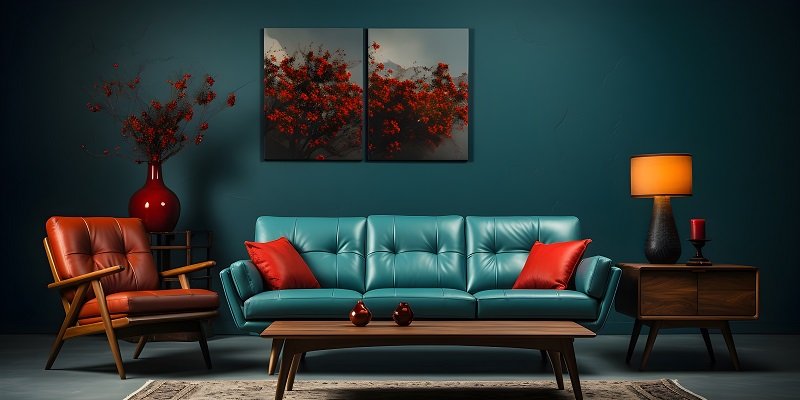
5- Cost
Full-Grain: Most expensive.
Top-Grain: Slightly less expensive than full-grain.
Split/Genuine: Affordable.
Bonded: Very affordable.
Faux/Vegan: Generally the least expensive.
6- Aging
Full-Grain: Ages beautifully, develops patina.
Top-Grain: Ages well, retains a polished look.
Split/Genuine: Does not age as gracefully.
Bonded: Wears out quickly.
Faux/Vegan: Does not age like real leather, retains original appearance.
7- Comfort
Full-Grain: Breathable, comfortable over time.
Top-Grain: Comfortable, smooth.
Split/Genuine: Less breathable.
Bonded: Can feel synthetic.
Faux/Vegan: Can be less breathable, varies by quality.
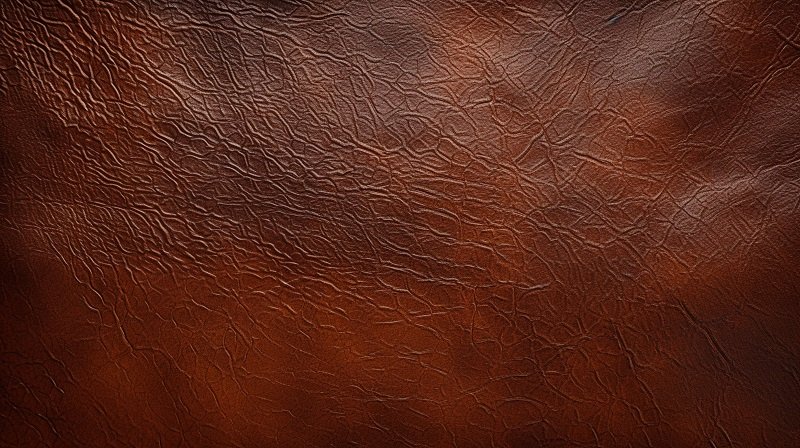
The Dyeing of Leather
Leather dyeing is a critical process that affects the appearance and feel of the final product. Different dyeing techniques result in various finishes and characteristics.
1- Aniline: Aniline leather is dyed using soluble dyes that retain the hide’s natural surface.
- Rich, natural look with visible grain and imperfections. Soft and supple feel.
- Susceptible to staining and fading. Requires regular maintenance.
2- Semi-Aniline: Semi-aniline leather is treated with a light coat that provides some protection while retaining much of the natural look.
- Natural appearance with added protection. Softer than fully protected leather.
- Less resistant to stains and wear than fully finished leather. Requires maintenance.
3- Nubuck: Nubuck leather is aniline-dyed and then sanded or buffed to create a soft, velvety surface.
- Luxurious, velvety texture. Rich and natural appearance.
- Highly susceptible to staining and wear. Requires specialized cleaning.
Protected Leather
Protected leather is treated with a coating to resist stains and wear. It’s durable and easy to maintain, making it ideal for families and high-traffic areas.
- Highly durable and resistant to stains and scratches. Uniform color and finish. Easy to clean.
- Less natural feel and appearance. Can feel less soft and supple.
Corrected Leather
Corrected leather has been buffed and treated to remove imperfections. While it offers a uniform appearance and is often more affordable, it lacks the natural characteristics of higher-quality leathers.
- Uniform appearance. More affordable than higher-end leathers.
- Less natural look and feel. May lack the character of full-grain leather.
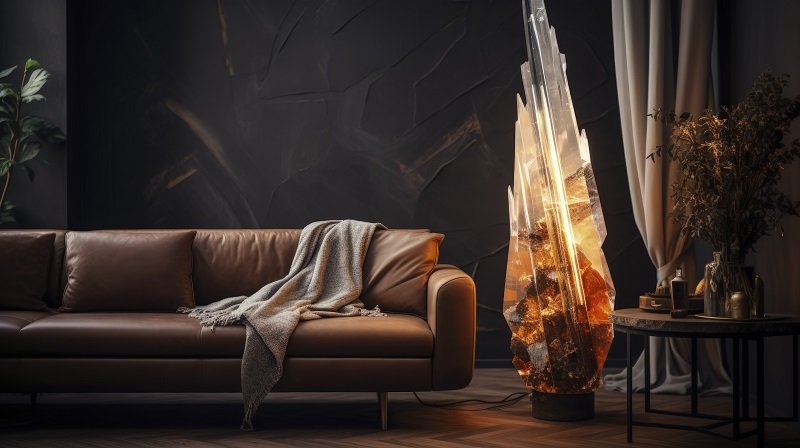
Grain vs. Grade
Understanding the distinction between grain and grade is essential when choosing leather for furniture.
Grain:
Full-Grain: The entire grain layer is intact, including imperfections. It is the highest quality and most durable.
Top-Grain: The top layer is sanded to remove imperfections, resulting in a smoother, more uniform appearance.
Split-Grain: The lower layers of the hide are used, resulting in less durable and less expensive leather.
Grade:
High-Grade: Refers to the quality and condition of the leather. Higher-grade leathers are free from defects and blemishes.
Low-Grade: Contains more imperfections and may be used for less visible parts of furniture.
Conclusion
Choosing the appropriate type of leather for furniture requires an awareness of the various types, their qualities, and how they fit into your demands and lifestyle. Full-grain leather gives unrivaled longevity and a distinct patina, whilst top-grain leather strikes a balance between luxury and care. Split and bonded leathers are more affordable, while faux leather is an ethical and cost-effective option. Considerations such as look, durability, upkeep, and cost can help you make an informed selection that improves your home’s attractiveness and utility.
FAQs
1- What is Full-Grain Leather?
Full-grain leather is the highest quality leather made from the top layer of the hide. It retains all the natural marks and imperfections, making each piece unique. It’s known for its durability and ability to develop a beautiful patina over time.
2- How Does Top-Grain Leather Differ from Full-Grain Leather?
Top-grain leather is also made from the top layer of the hide but has been sanded and treated to remove imperfections. It has a more uniform appearance and is slightly less durable than full-grain leather but still offers high quality.
3- Is Split/Genuine Leather a Good Choice for Furniture?
Split or genuine leather is made from the lower layers of the hide. It’s more affordable than full-grain and top-grain leather but is less durable and prone to cracking over time. It’s a good budget option but doesn’t offer the same longevity.
4- What Are the Advantages of Bonded Leather?
Bonded leather is made from leftover leather scraps bonded together. It’s the most affordable type of leather but also the least durable. It’s a good option for budget-conscious buyers but may need to be replaced more frequently.
5- How Does Faux/Vegan Leather Compare to Real Leather?
Faux or vegan leather is made from synthetic materials designed to mimic real leather. It’s more affordable and ethical but doesn’t develop a patina and is generally less durable than real leather. It’s easy to maintain and available in a wide range of styles.
6- What is Aniline Leather?
Aniline leather is dyed with soluble dyes without a protective topcoat, preserving the natural surface of the hide. It’s very soft and luxurious but prone to staining and requires careful maintenance.
7- What is Semi-Aniline Leather?
Semi-aniline leather is similar to aniline leather but has a light protective coating. This makes it more resistant to stains and wear while still maintaining a natural look and feel.
8- What is Nubuck Leather?
Nubuck leather is aniline leather that has been sanded or buffed to create a velvety surface. It’s very soft but can be easily stained and damaged, requiring careful maintenance.
9- What is the Difference Between Protected and Corrected Leather?
Protected leather has a coating to resist stains and wear, making it durable and easy to maintain. Corrected leather has been buffed and treated to remove imperfections, offering a uniform appearance but lacking the natural character of higher-quality leathers.
10- How Do Grain and Grade Affect Leather Quality?
Grain refers to the natural surface of the leather, with full-grain being the highest quality. Grade refers to the overall quality and treatment of the leather. Higher grades like full-grain and top-grain offer superior durability and aesthetics, while lower grades like split and bonded leather are more affordable but less durable.
